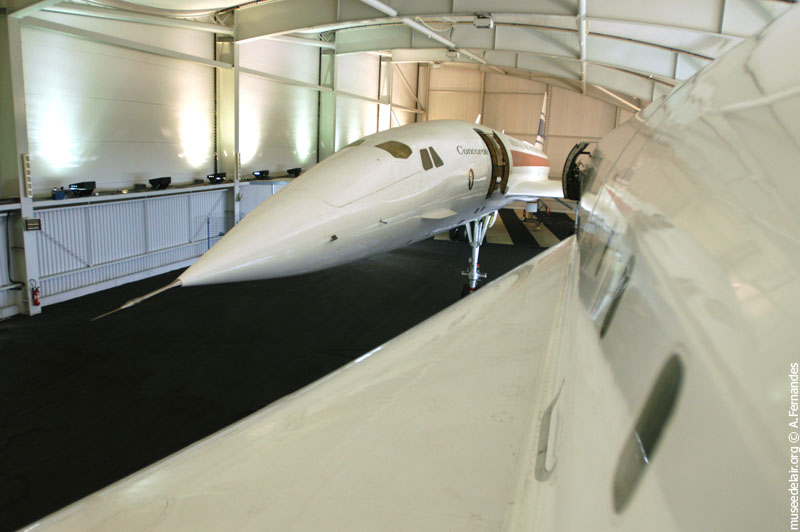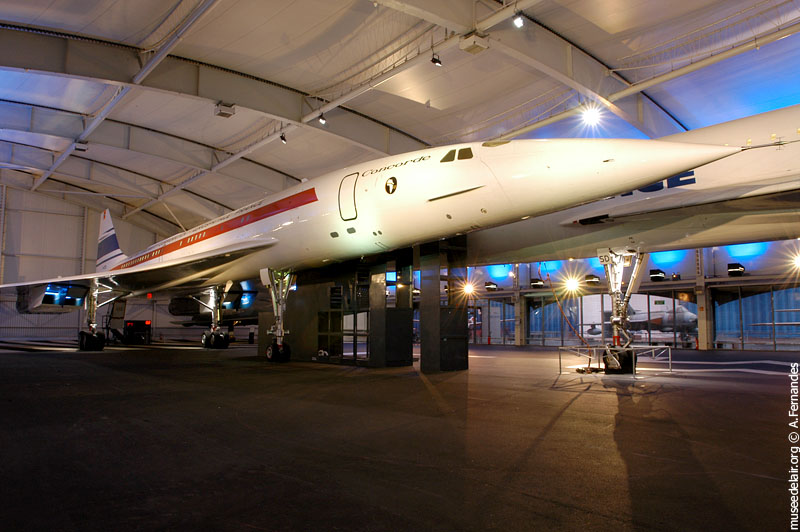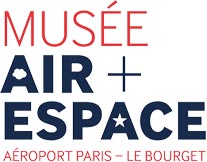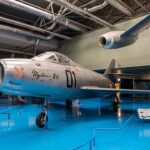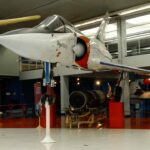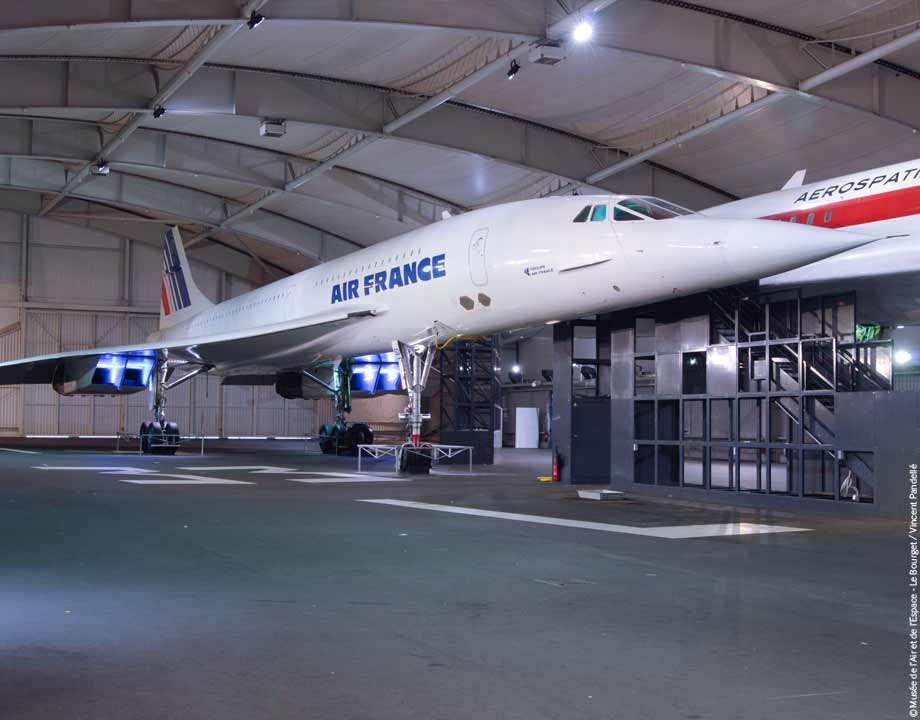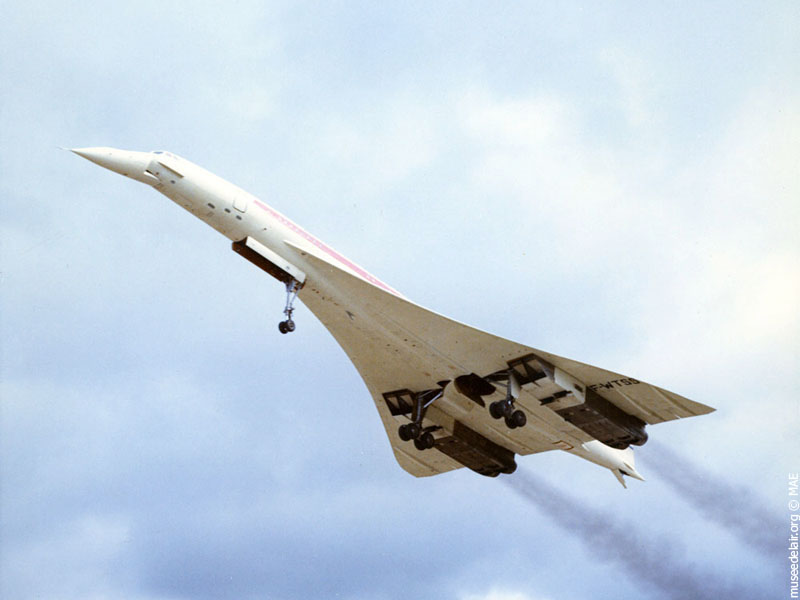
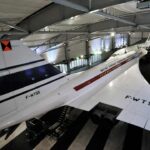
BAC-Sud Aviation Concorde prototype 001 F-WTSS
4 Bristol Siddeley/SNECMA Olympus 593 B Stage 1 turbofan engines, 13,435 kg dry thrust and 17,100 kg with afterburner.
- Envergure : 25.56 m
- Longueur : 56.24 m
- Hauteur : 12.11 m
- Surface alaire : 358.25 m²
- Masse en charge : 154000 kg
- Vitesse maximale : 2198 km/h
- Plafond pratique : 18000 m
- Distance franchissable : 5200 km
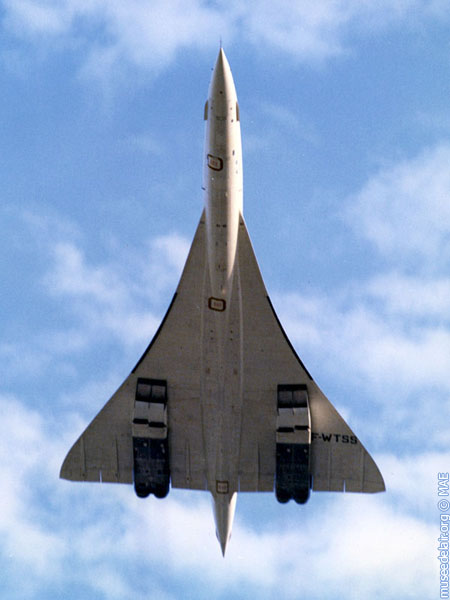
B.A.C – Sud Aviation Concorde 001
On 25 October 1962, after many separate and joint studies, a treaty was signed between France and Great Britain for the construction of a supersonic transport aircraft called Concorde. Sud Aviation was initially to produce a medium-haul version, and the British Aircraft Corporation a long-haul version of the same airframe, capable of carrying 100 passengers at a cruising speed of Mach 2.2.
A challenge from Europe to the United States, the aircraft required the development of the most daring technologies and adaptation to a partnership that was not without its difficulties. The first part saw the light of day in April 1965, and Concorde 001, the first prototype, left the factory on 11 December 1967. After fifteen months of ground tests, Concorde 001 took off from Toulouse on 2 March 1969, piloted by André Turcat and assisted by Jacques Guignard, Henri Perrier and Jacques Rétif. The aircraft, along with the British prototype 002, opened up the flight envelope. The 001 reached Mach 1 on 1 October 1969 and Mach 2 on 4 November 1970 – performances which had already been achieved by its rival, the Soviet Tu-144 Tupolev.
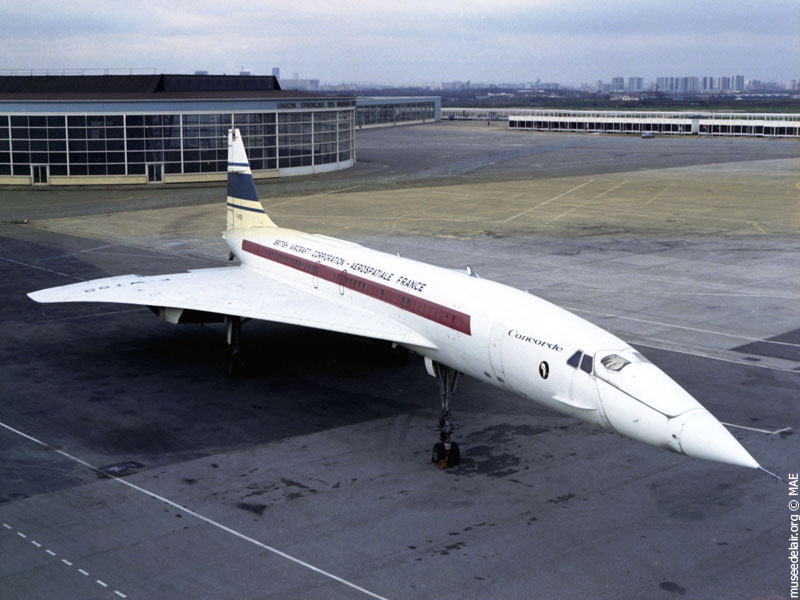
The prototype took part not only in technical tests, but also environmental ones, such as the effects of the shock wave on the ground, or the development of engines that emit less smoke. On 30 June 1973, piloted by André Turcat, it completed a flight from Las Palmas to Fort-Lamy, enabling astronomers to observe a solar eclipse continuously for 74 minutes. The 001 also served to enhance France’s prestige when, on 7 May 1971, President Pompidou became the first head of state to fly at Mach 2.
After accumulating 812 flight hours, 255 of them supersonic, Concorde 001 completed its 397th flight, landing in front of the National Air and Space Museum of France on 19 October 1973.
